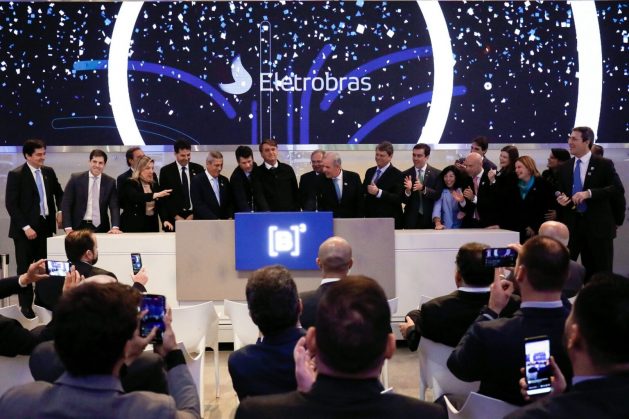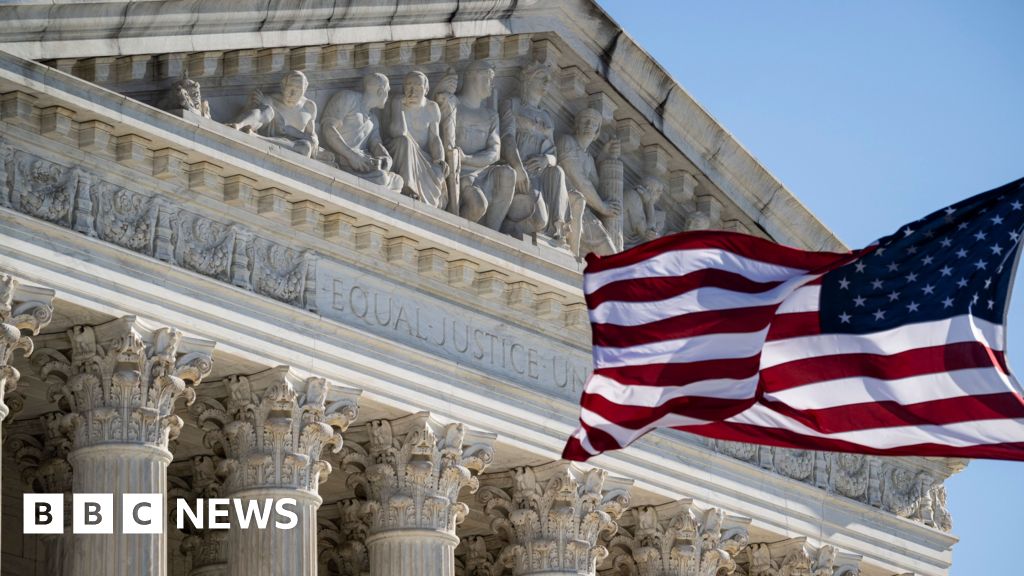How the Privatization of Eletrobras May Lead To an Uncertain Future in Brazils Energy Transition and Favor Price Increase to the End-Consumer
NEW YORK, Feb 15 (IPS) – Eletrobras is Latin America’s biggest electricity company, responsible for around 30% of Brazil’s power capacity and 50% of all its transmission lines. In 2021, the Brazilian government announced it would reduce its controlling shares in this state-owned company from 72% to 10%. Given Eletrobras’ dominant role in Brazil’s power sector, this divestment in the government’s controlling shares merits a more complete understanding of the implications for Brazil’s energy transition and energy security.
This is because the law that was passed to make this happen raises important risks to the decarbonization of the country’s power sector and has the potential to increase electricity tariffs.
How the legal process that open the door for the government’s controlling stake on Eletrobras raised questions about the energy transition
The government’s dilution of its participation as Eletrobras’ major shareholder required legal approval in congress, consolidated through a law now commonly known as Eletrobras’ privatization law (Law 14.182/2021).
Given how politically charged this law is and the electoral dynamics due to looming presidential elections in the following year (2022), the government decided to fast-track this bill in congress under a mechanism known as a provisional measure (medida provisória), thus expediting its approval process. The deadline for approval of bills using this fast-track provision is of 120 days.
While an effective legislative tool, the use of this fast-track provision in this law was criticized by some institutions in Brazil as not “conducive to the timeframe required to conduct a comprehensive study” that the privatization of a company like Eletrobras would have merited.
The bill was approved on the eve of the fast-track deadline for its approval. However, it contained over 500 amendments, many of which were unrelated to the company’s privatization.
This strategy is known as jabuti, where legislators take advantage of the provisional measure’s fast-paced characteristics to include amendments which may favor their own political interests. By adding amendments to key clauses of the bill, as was done in Eletrobras’ privatization, the likelihood of vetoing the added amendments is close to null.
Of all the amendments to the Eletrobras’ privatization law, the mandatory installation of 8 GW of additional thermal gas power capacity to be deployed between 2026 and 2030 was perhaps the most troublesome. To understand how massive this is, this provision in theory forces Brazil to expand natural gas installed capacity by 56% per cent from around 14.3 GW in 2021.
While this measure gave no responsibility to Eletrobras for the deployment of this thermal capacity, it signals the government’s direction and ambition for the power sector. In addition, this amendment included a provision that the new thermal power plants had to function constantly for 70% of the time throughout the next 15 years.
Such mandatory use for thermal in the future, would result if followed through, in an expected 33% increase of greenhouse gas emissions and redraw the country’s electricity matrix which is currently one of the cleanest globally with 82.9% renewables (world average being 28.6%).
The law, as approved today, also disfavors renewable sources, currently the cheapest form of energy in Brazil, which have no additional variable costs of operation to fuel the power grid.
The new law requirements may increase installation costs by up to R$ 6.6 billon (roughly USD 1.3 billion) when compared to the prior Brazilian national energy expansion strategy and thus reflect in price increases for the end-consumer. A requirement to operate the thermal powerplants for 70% of the time has negative implications for the future development of non-hydropower renewables given that it reduces wind and solar power capacity expansion in up to 12 GW and 3.5 GW until 2030, respectively.
The law does not significantly affect hydropower capacity expansion (already projected to slow down), which would increase modestly in about 0.2 GW in the same time frame and remain responsible for one of the largest shares of the Brazilian power mix.
The impact of this build up in thermal power in Brazil
The inclusion of gas-powered plants is supposed to address energy security and support the company’s efficiency in providing reliable energy nationwide as frequent droughts threaten hydropower capacity. While understandable as an objective, as it stands, the current provisions are problematic in many fronts, not only in terms of the GHG emission implications.
According to the law’s provisions, the mandatory regions where these thermal powerplants are to be installed are mostly in water-abundant regions. Second the natural gas infrastructure is lacking. Third, additional infrastructure investments may lead to higher energy prices for the end-consumer.
Gas feeding these power plants will mostly come from Brazil’s southeast region to be transported across the country, which adds to transportation costs and emissions. Through this lens, the government-issued Ten-Year Energy Plan (PDE 2031) acknowledges the difficulty and costs of implementation due to the necessary added infrastructure requirements. The report implies that meeting the mandated targets may be challenging. This was reflected in October 2022 auctions in which 1.17 GW of additional capacity for gas-powered power plants were contracted at a price seven times higher than those bided at similar auctions in previous years.
In addition, the implementation of new powerplants would require decades of on-going operation to ensure full amortization of costs. This may lead to stranded assets as demand for cleaner sources of energies outpace fossil fuels. Although the government has claimed that part of the additional installed capacity will be used to replace existing thermal power plants (to be switched off by 2024), emissions from additional infrastructure and the 70% intermittency requirement outpace the efficiency gains from the new installations.
This is reinforced when added to the additional requirement of developing 721 kilometers of transmission lines in the Amazon Rainforest region, 125 kilometers of which are located in indigenous land. This implies additional infrastructure costs and more emissions (linked to deforestation). Equally difficult is that such buildup of infrastructure in the Amazon Rainforest and disregard to social and environmental licenses infringes on Brazil’s Sustainable Development Goals, thus also going against national energy planning.
Even if it is in the law, will Brazil’s be able to attract capital for natural gas power plants?
While technically enforceable by the Eletrobras’ law, many questions remain on whether companies will be willing to invest in capital-intensive projects which may soon become stranded – especially when penalties for doing otherwise remain unclear.
In addition, it is unlikely that Eletrobras’ new shareholders would be on board with such a massive of buildout in thermal power plants. Singapore’s sovereign fund, GIC; Canadian pension fund, CPPIB; and, Brazilian Investment Management company, 3G Radar, each hold around 11% of Eletrobras.
All of these financial actors have shown considerable interests towards investing in the energy transition and decarbonizing their portfolios. It is thus believed that this could hinder their willingness in investing in high-cost gas power plants which require additional infrastructure investments in order to become profitable, not to mention that Brazil does not produce enough natural gas and thus might need to be imported via very expensive LNG.
Regardless, if the additional capacity of 8 GW of thermal gas power does go through, one should expect these power plants to be running for a considerably long time in order to fully amortize the investments. This could lead to a 33% emission increase which will slow down the Brazilian government’s energy transition strategy.
Lula, Brazil’s new president, has indicated that its government will revise this 8 GW mandate, an attempt to remove the 70% inflexibility requirement. Instead, the new government might make the additional power as back-up for renewable energy intermittence, diminishing the potential environmental hinderance foreseen in the law. In order to do so, a new motion would have to be approved in congress – a usually time-intensive measure. This regulatory uncertainty may in the meantime decrease energy investments and impact the pace of the energy transition.
The Eletrobras law also pushed for renewables
The Eletrobras law did promote measures which favor the energy transition. However, if all these requirements are fulfilled, they may also increase electricity prices for the end consumers.
The law dictated new concessions for hydropower generation for the next 30 years, ensuring dispatchable renewable energy, which contributes to the country’s energy transition. However, it favors hydropower plants which fall under the price quota regime, allowing them to sell the generated electricity under market prices rather than through imposed limits by the national electricity agency (ANEEL). This may lead to higher tariff prices, which could reach R$ 167/MWh in 2051 (compared to R$ 93/MWh today). The government tried to curtail this by mandating that half of the revenue generated through Eletrobras’ privatization shall be directed to diminishing the tariff increase. Despite this measure, this could still represent up to eight times less than the required investment needed to keep prices low.
An additional measure promotes the development of small hydropower plants, to be developed over the next 20 years. While this promotes dispatchable renewable energy and addresses the need to replace existing old hydro powerplants which would soon cease operations, it also favors the most expensive form of renewable energy available, again creating possible cost impacts for the end-consumer. The government addressed this by creating a price cap according to 2019 auction prices adjusted to inflation (R$ 314.55 / MWh). These prices remain 7.7% higher than those found in 2021 auctions.
The government also included the extension of PROINFA by 20 years. PROINFA is a governmental program established between 2002 and 2022 which created subsidies for biomass and small hydro power plants, wind, and solar farm owners in order to incentivize the production of renewable energy sources in the country.
While positive in theory, such extension would only favor previous contracts as opposed to a structural revision of the Brazilian power grid and costs of renewable technologies. Most of these investments have already been amortized and cost of technology has decreased significantly.
Its impact in promoting the energy transition therefore, can be questioned, as it is not necessarily deploying new renewable technologies, but rather favoring outdated contracts at higher costs. A more interesting alternative instead would have been to promote the expansion of new low-cost renewable energy projects through new auctions.
Final thoughts: The Mixed Outcome of Electrobras’ privatization Law
In conclusion, it is unclear what impact will Eletrobras’ privatization truly incur for the country’s energy transition. It is argued that through its privatization, the company will now be freed from bureaucracy, allowing it to speed up investments and increase its ability to invest in new (riskier) clean technologies.
Eletrobras’ CEO, has been known for his inclination towards green technologies and has advocated for green hydrogen investments in several occasions. The same is expected from the new shareholders, who have been seen to adopt decarbonization investment strategies. Eletrobras’ net zero strategies across scope 1, 2, and 3 are also contradictory to exactly the amendments of the law, claiming to decarbonize through the sales of thermal-powered power plants and I-REC purchases.
However, it is important to note that the law does push for thermal gas expansion, which, if occurs, may shift and delay Brazil’s energy transition. The absence of clear penalizations and accountability makes it unclear on whether the additional capacity of 8 GW of thermal gas powerplants will indeed be adopted.
While it is unclear how much the privatization will truly impact the energy transition, increase in tariff prices may be likely. The law and the subsequent auctions since its approval, seem to favor costly renewable contracts, which will likely increase tariffs for the end-consumer. Tariff increases may also happen due to the expansion of PROINFA, promotion of small hydro power plants, and implied cost of necessary added infrastructure for thermal gas-powered plants.
Victoria Barreto Vieira do Prado is a MSc. Sustainability Management student at Columbia University. Prior to her studies, she has worked in the development of the Brazilian Voluntary Carbon Market via her work at Carbonext, and in the decarbonization strategies of major players in the Brazilian hard-to-abate sectors as a consultant
References
CCEE. (2022). Resultados Leilão ANEEL Outubro 2022. CCEE. Retrieved from November 1st
Eletrobras (2022)(A). Apresentação de resultados 2T22. RI Eletrobras. Retrieved October 24th, 2022
Eletrobras (2022)(B). Estretatégica Climática. Portal Eletrobras. Retrieved January 7th, 2023
© Inter Press Service (2023) — All Rights ReservedOriginal source: Inter Press Service
Check out our Latest News and Follow us at Facebook
Original Source







